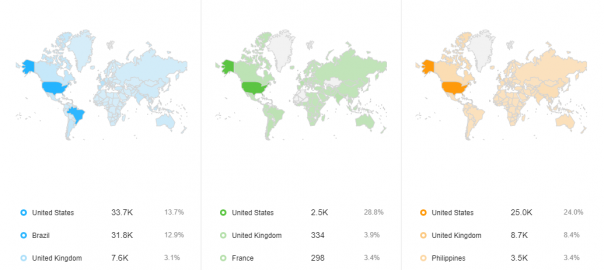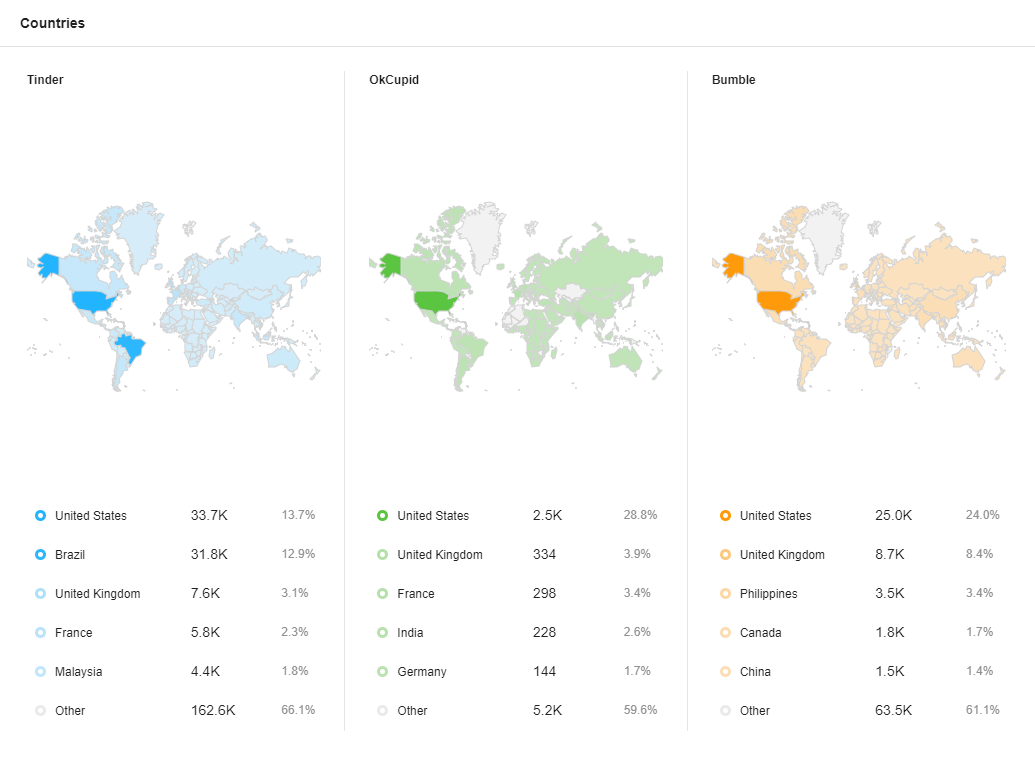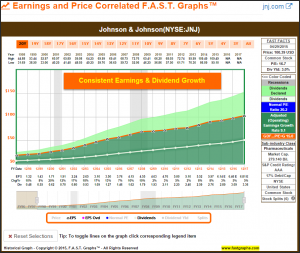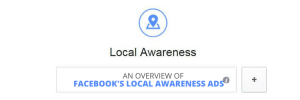In 2020, it’s more vital than ever to ask yourself whether your branding is as good as it can be. Is your brand image helping you achieve your goals? Is it (still) relevant? Is it getting more popular? How does it compare to the competitors?
The metric that’s required for answering these questions is “brand health”. Brand health aims to show how effective your branding is in helping you achieve your aims. It’s a collection of metrics that consists of the following:
1. Brand awareness
2. Brand reputation
3. Share of voice
4. Customer satisfaction
Calculating these metrics will give you a good idea of where your brand’s strengths and weaknesses are. You might discover that the public isn’t talking about your brand enough, or you might find that your brand’s reputation isn’t that great due to a minor pitfall that had happened years ago and that no one took care of. Unless you look closely, you’ll never know what’s stopping your brand and what’s driving it forward.
But where should you look? In this article, we’ll turn to social media for the answers. Social media is an ocean of data. With 3 billion users, all demographics and psychographics possible, and being the primary place to voice opinions, it reveals all (or most of) the insights that marketers require to assess their brand health. The only challenge is that you have to know how to dig up the information you need amongst all the noise around it.
For that, there are social media monitoring tools (also called social listening tools). Here is a quick overview of the top three social listening tools most fit for the task.
Awario
Awario is a social media listening and analytics tool that tracks mentions of any given keyword on Twitter, Facebook, Instagram, YouTube, Reddit, news, blogs, forums, and the web. It has a Boolean search option which allows brands with common or irregular names to cut through the noize easily.
Best for: small and medium-size businesses
Pricing: starts at $ 29/month ($ 24/month if billed annually). Free 7-day trial is available.
Brandwatch
Brandwatch is a social media monitoring and analytics tool that monitors all social media networks, including niche ones such as Baidu, Naver, Qzone, and Tumblr. It also monitors blogs, forums, news sites, review sites, and video sites. Moreover, you can request any page you wish Brandwatch to monitor, and they’ll add it to their list of sources in no time.
Best for: large businesses and agencies
Pricing: available upon request
Talkwalker
Talkwalker is a social monitoring tool that covers Twitter, Facebook, Instagram, YouTube, Pinterest, Flickr, blogs, news, the web, print, and even TV. The more expensive plans also offer image recognition, which means that you can analyze the recognition of your logo as well.
Best for: large businesses and agencies
Pricing: starts at €6,000/year.
Social listening tools such as the ones described above, to a large extent, measure brand health on social media. They reveal the level of brand awareness as well as how it changes over time, allowing the user to see correlations with product launches, marketing campaigns, and any other marketing activities. They show brand reputation (and its fluctuations) using sentiment analysis. They compare the buzz around your brand to that of your competitor to show the share of voice. And they deliver customer feedback.
Now let’s go through the metrics one by one to make the process of checking brand health as clear as possible.
Brand awareness
Measuring brand awareness is a child’s play if you have a social media listening tool. Simply create an alert for your brand name (don’t forget its misspelling and abbreviations) and wait for the tool to gather mentions from the social networks you’re interested in, as well as from the news, blogs, and forums.
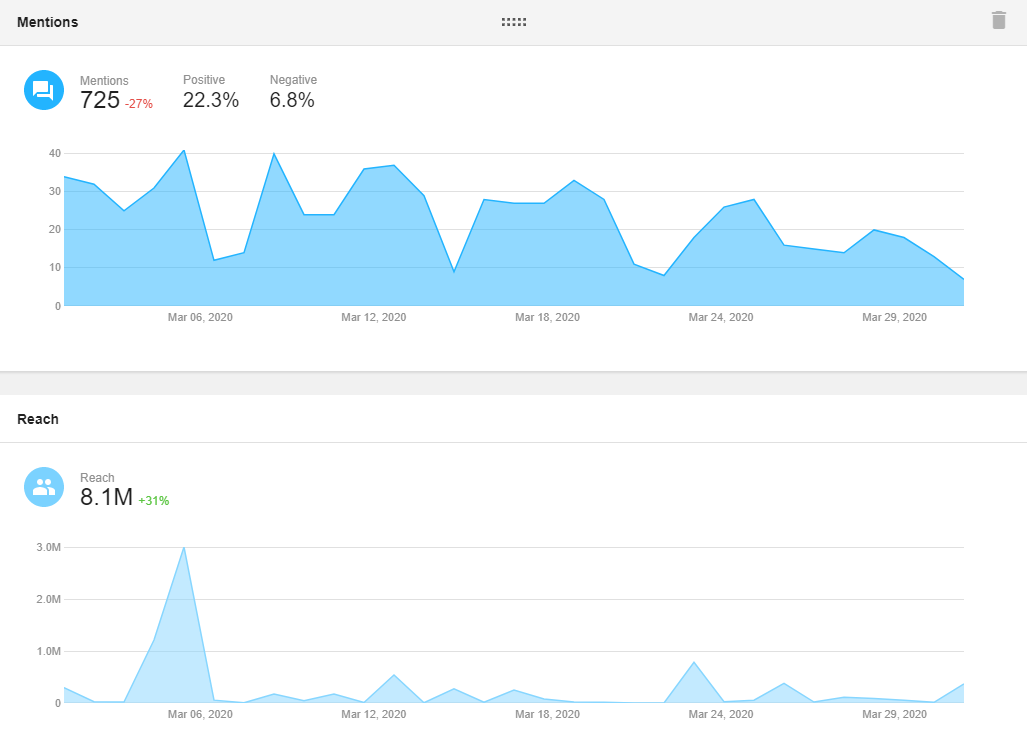
In case you’re interested in specific products or campaigns, create alerts for them, too. Observing the awareness graph will help you realize not only the level of your popularity, but also how it changes over time, and where the conversation is happening.
How to improve brand awareness
- Look at social media sources that mention your brand the most. Dig into these conversations and take part in them – as an expert and the company representative.
- Look at the sources you don’t get that much attention from and brainstorm why that could be the case – maybe you need to concentrate your efforts on other platforms?
- Monitor your niche and the hashtags that are popular in your niche. Take part in the conversations found.
- Use a social media monitoring or an influencer discovery tool to find your industry influencers and collaborate with them.
- Monitor your competitors to discover news sources and blog posts that mention them. Chances are, the authors and journalists that have mentioned your competitor will be interested in your input as well. Similarly, find your competitors’ influencers – they too might be interested in spreading the word about your brand.
Brand reputation
Most social media listening tools will measure brand reputation along with measuring brand awareness. Sentiment analysis – a built-in feature in the tools described above – breaks down all mentions it finds into positive, negative, and neutral using machine learning and natural language processing.
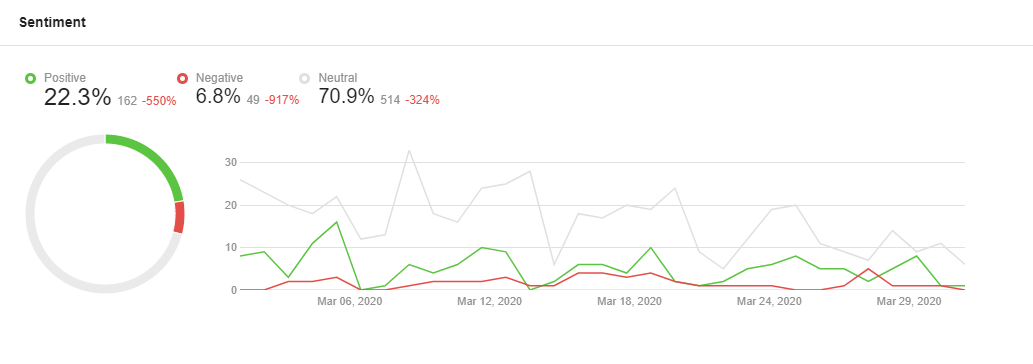
Hence, you can see at a glance which sentiment prevails, how the sentiment changes over time, and what it depends on. A spike in negative mentions signals a social media crisis and should be attended to immediately – this is why sentiment analysis always works in real time.
How to improve brand reputation
- While understanding the overall sentiment is important, to actually solve problems and improve brand reputation, you have to see where the problems are. For that, filter the Mentions Feed to see negative mentions only, and reply to people with questions, complaints, and concerns.
- Look at the Topic Cloud to understand the most common problems around your product and services, if any.
- Improve customer service. Customer service is the pinnacle of great brand reputation. Even if products are problematic and some issues are unsolvable, simply replying to people in time and showing them that you care about their opinions boosts your reputation.
Share of Voice
Knowing how much people talk about your brand and whether this number is growing is obviously important. However, it can be hard to say whether the number is good enough if you have nothing to compare it to. You should know how much people talk about your niche on average to know where your brand is at. The simplest way to benchmark your results is to measure Share of Voice online. The metric will tell you the number of times your brand is mentioned vs. the number of times competitors’ brands are mentioned. This includes the web, news/blogs/forums, and social media, and covers brand awareness, customer engagement, employee engagement, and other metrics that determine online visibility.
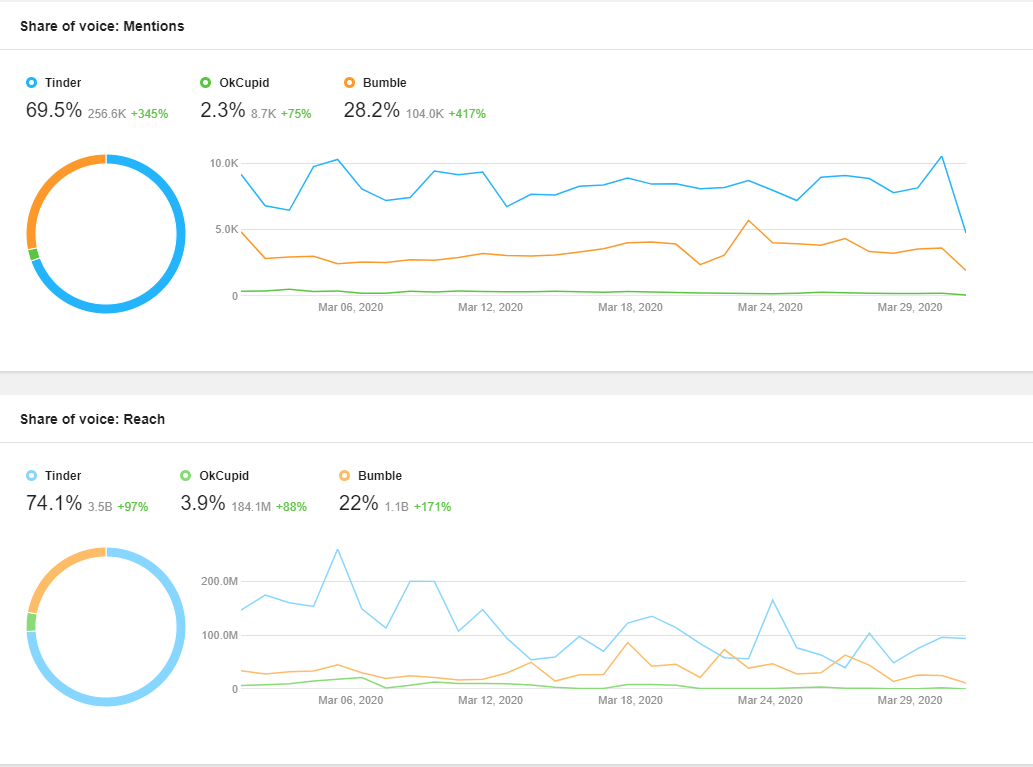
Social media monitoring tools also let you compare brands by specific metrics, such as brand reputation or brand awareness in specific locations.
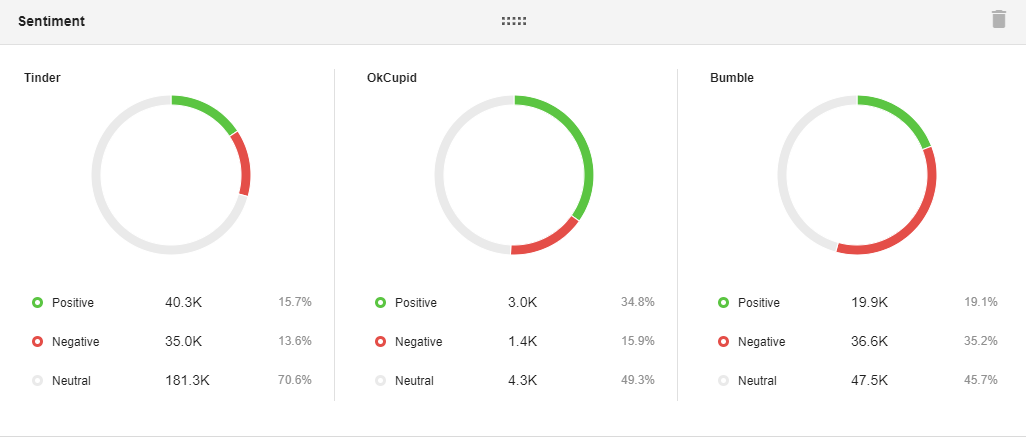
How to increase Share of Voice
Share of voice increases when all other metrics increase. However, as it is a measure that compares your brand to your competitors’, the first thing to do would be thorough competitor research.
Customer satisfaction
Finally, it’s time to turn to your existing customers and ask for their feedback. Gathering feedback isn’t an easy task: for some structured, deep, and detailed data, you’ll need good old surveys and focus groups. Here are some customer satisfaction survey examples that you can use.
If your brand is relatively new and hasn’t yet caused millions of mentions on social media, you can also use the social listening data you have to gather customer feedback. Look through mentions one by one, or search for topics that you’re interested in in the Mentions Feed to discover what exactly your customers like and dislike. Unlike with surveys and focus groups, you’ll see opinions that are not biased by the questions asked. They might surprise you in that there could be a feature you thought the least of and would never include in the survey that gets the most attention.
How to improve customer satisfaction
The best way to improve customer satisfaction is to ask customers for their opinions and actually consider these opinions later. The questions should, surely, mainly focus on your brand and your niche, but can also be open-ended. Here are some examples:
- How often do you use the product or service?
- Does the product help you achieve your goals?
- What is your favorite part about the product or service?
- What would you improve if you could?
Organize your data
Now that you have all this information – brand awareness, brand reputation, share of voice, customer satisfaction – it’s time to use unavoidable Excel and see how your brand health is doing. Excel will make it instantly clear how everything compares and where your brand’s strengths and weaknesses are.
Use a separate tool/file for gathering qualitative data of what exactly causes the most positive and negative reactions, what the most popular topics associated with your brand are, and any other insights you’ve discovered.
Digital & Social Articles on Business 2 Community
(56)
